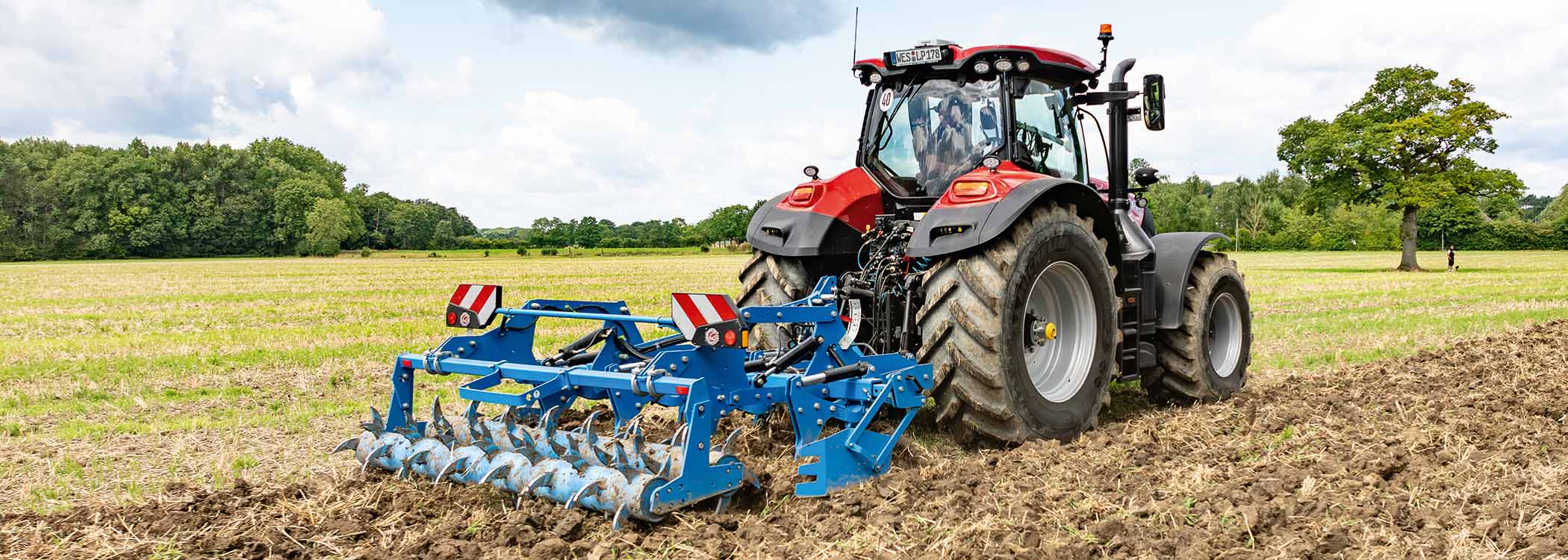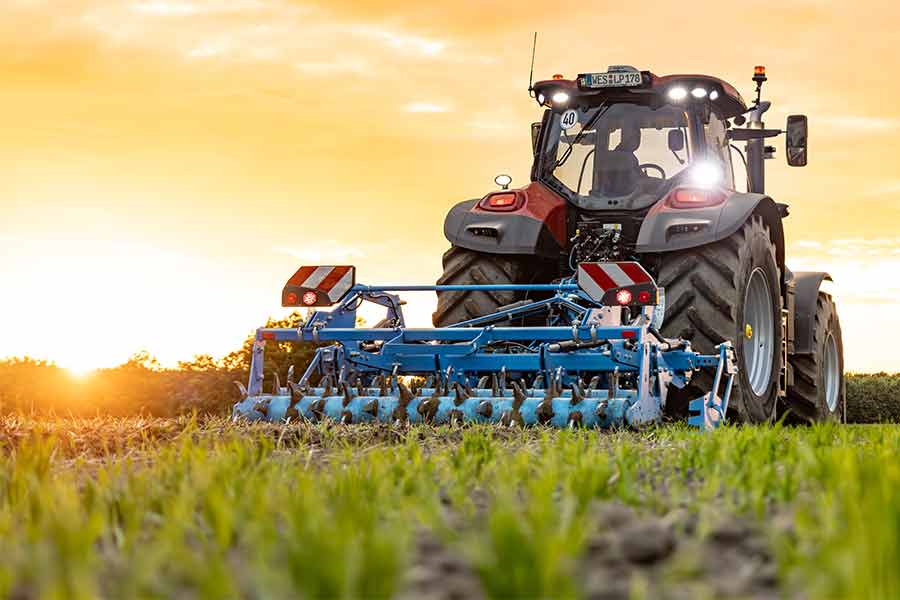Deep loosener

Deep loosener for agriculture
The deep loosener is an effective tool for maintaining the performance of the soil in the long term and securing sustainable yields. It breaks up the soil deep below the plough sole without turning it over. Special tines penetrate up to 60 cm into the subsoil and remove compaction that cannot be achieved with conventional ploughing.
The result is healthier crops and higher yields – even in years with irregular rainfall.
Deep loosening improves soil structure
- Water can seep away more easily
- Nutrients are more readily available to plants
- Roots can grow deeper
- Prevents waterlogging and erosion
The new member of the team
The LEMKEN Onyx impresses with its robust design and precise technology. With up to 133 hp per metre, it reliably loosens soil to a depth of 60 cm – for better soil structure and optimal conditions in every crop rotation.

When is a deep loosener required?
A deep loosener shows its strength where it really counts: in breaking up deep soil compaction. This is caused, for example, by waterlogging, the use of heavy harvesting machines or on soils that are prone to compaction.
Once this harmful compaction has been loosened, plants can once again access deeper layers of water and nutrients more easily. This improves root penetration, strengthens the vitality of the crop and ensures higher yields in the long term.
Choosing the right share is crucial for optimum loosening:
- OL (loosening share): for pure loosening of the soil.
- OM (mix share): for loosening and mixing the soil at the same time.
This allows you to adapt the deep loosener precisely to the needs of your soil and your crop.
How often is the deep loosener used?
The deep loosener is mainly used where heavy machines put a lot of strain on the soil. Typical applications are potato harvesting or beet harvesting, where the soil is usually rolled over full-surface.
Another useful area of application is soil cultivation before sowing rape. Loosening allows the rape to root more easily in deeper soil layers and develop optimally.
As a general rule
- Deep loosening should be carried out at least once during crop rotation in order to break up the tillage horizon in a targeted manner.
- However, annual deep loosening is not recommended, as this will negate the desired effect.
Deep loosener vs. cultivator
At first glance, deep loosener and cultivators look similar. However, the decisive difference lies in their design and function:
- Tine length: The tines of the deep loosener are longer in order to penetrate the soil to greater depths.
- Levelling tools: The deep loosener does not have any levelling tools – these are not necessary as its strength clearly lies in loosening.
- Function of the cultivator: A cultivator also loosens the soil, but has the additional task of levelling and mixing. It is therefore usually equipped with three or four beams, which have a narrower line distance than, for example, the two-beam Onyx.
- Traction and stability: Due to the deeper working depth, the deep loosener requires more traction and is therefore more robustly built than a cultivator.